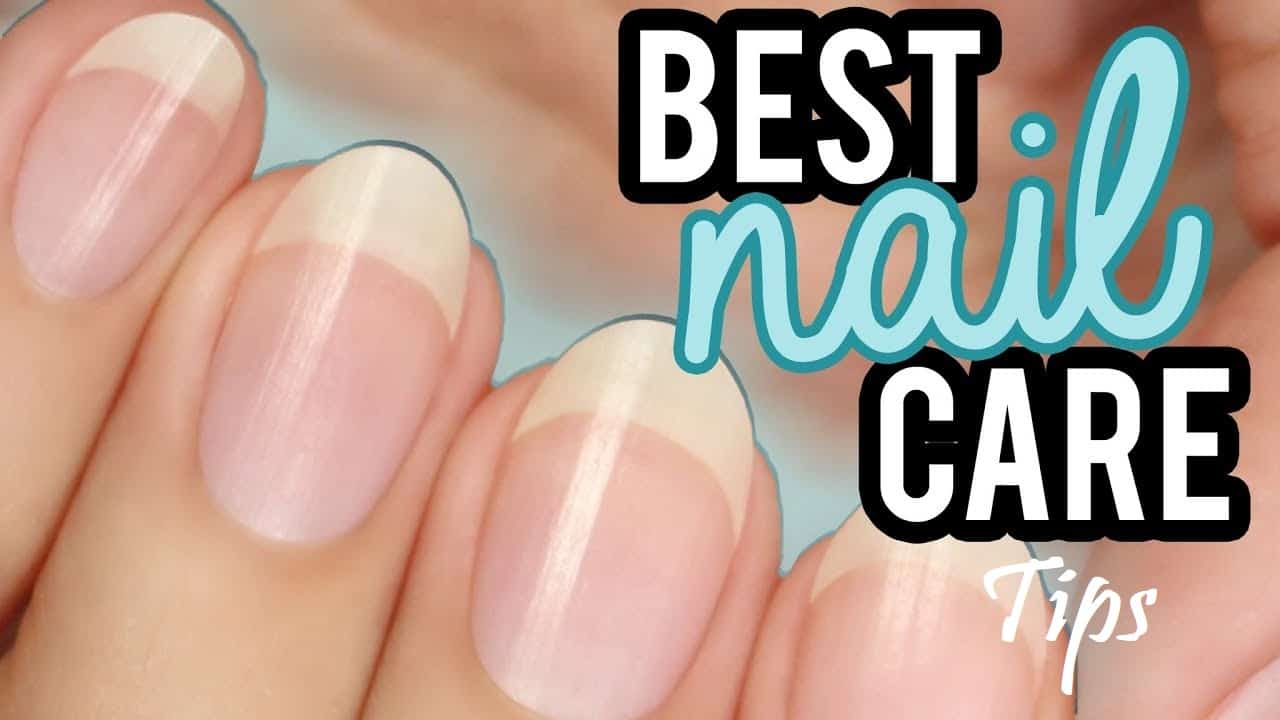Are you taking good care of your nails?
Take a close look at your nails – are they strong and healthy looking? Or do you see ridges, dents, or areas of unusual color or shape?
Healthy nails are one of those less-visible confidence boosters, like wearing a fancy pair of underwear just because or splurging on amazing socks to wear under your boots.
Whether your nail care is a form of self-care, an indulgence, or just routine maintenance, keeping your nails in tip-top shape is a worthwhile investment. And here’s the good news: Healthy nails require an investment of time, not money.
The best route to stronger, longer nails is mostly through simple lifestyle habits, not pricy nail tools. But getting healthy nails also means kicking some bad habits, such as using your nails as a built-in pocket knife.
For doable, helpful nail tips, here are some everyday dos and don’ts of nail care. Follow these steps, and you’ll have stronger, longer, and healthier nails before you know it.
Here we go.
1. Moisturize Your Nails
Moisturizing is a well-known secret to healthy skin, but it’s often overlooked in nail care. While dry, brittle nails can be the result of many factors, they’re ultimately a cry for moisture, so consider proper moisture the foundation of your nail care routine.
Dry and flakiness are as bad for your nails as they are for your skin. Nails are very delicate and tend to break off easily. Moisturize them to make them strong.
When applying hand lotion, give your nails a little extra attention. There are plenty of moisturizing nail products on the market, but applying moisturizer is really only half the battle—there’s more to strong nails than a fancy cream or serum.
Choose from a range of hand creams, cuticle oil, creams, or moisturizing oils that will help keep your nails and cuticles shiny and healthy.
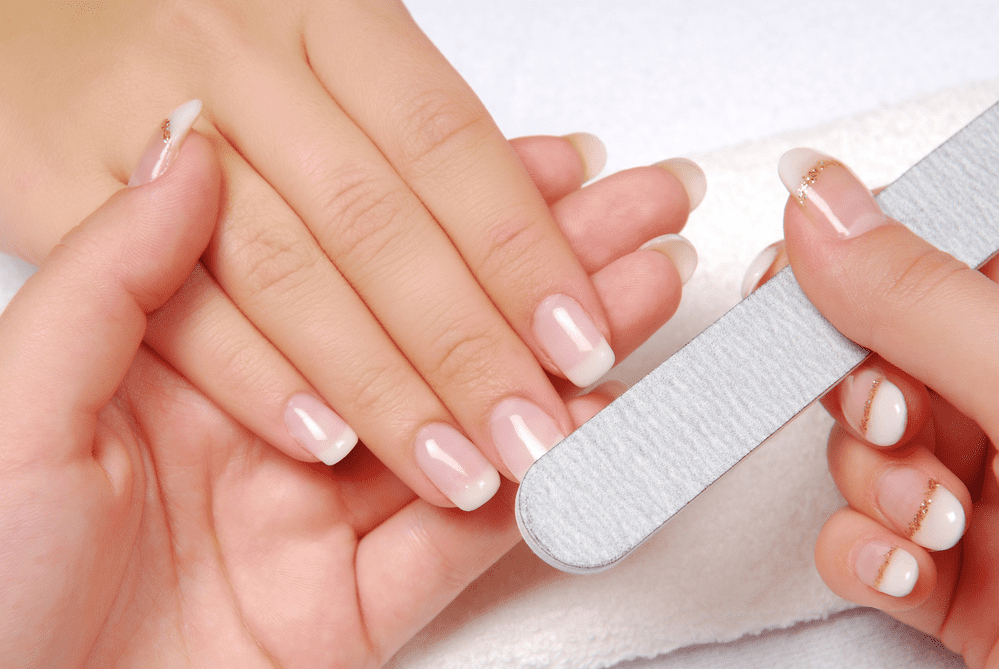
2. Leave Your Cuticles Alone
It’s common practice to cut, push back, or try to get rid of cuticles altogether, but cuticles are not the enemy. In fact, the cuticle is “the nail’s natural protective seal.” Messing with your cuticles can do far more harm than good—even if a nail technician is the one doing the handiwork, a compromised cuticle can leave the nails vulnerable and at risk of infection.
When your cuticles get dry or injured, it can injure the nail bed and affect the way your nails grow. Cuticles are very delicate and get ruptured easily. Taking good care of your cuticles is a crucial part of nail care.
If you have a hangnail, handle it carefully – trim it gently so that it doesn’t stick out or cause more pain. Do not bite or pick the cuticles.
Make sure you moisturize your cuticles – apply either coconut or almond oil to the cuticles and massage gently to nourish them. Moisturizing the cuticles helps protect and strengthen your nails.
3. Minimise Exposure To Water
Don’t stop washing your hands or shower with gloves on, but do pay attention to ways you can reduce the time your nails spend in contact with water because excessive water contact can weaken nail structure. (Wet hair is especially vulnerable, and the same caution-when-wet approach you take to handling wet locks can apply to nail care, too.) For example, consider wearing gloves while doing the dishes or other wet work.
Do you know how soft and bendy your nails get after a long bath? Consider this: The nail is like a sponge. It is 1,000 times more absorbent of water than the skin, for example, and so water can easily diffuse into the nail. Excessive water exposure can put significant strain on delicate nail cells (called onychocytes), which can lead to brittleness, peeling, and breakage.
4. Be Gentle On Your Nails
People may sometimes dig beneath their nails with the pointy end of a nail file to get the dirt. You don’t need to do that, because it can separate the nail plate from the underlying bed, and then you can develop a bacterial or fungal infection.
For similar reasons, you should resist the urge to use your nails as replacement tools—no matter how convenient it may be. (There are plenty of other creative ways to open a can of soda.) And if you do indulge in an acrylic or gel manicure—which you should only do sparingly—proper removal is important. When you peel [acrylic or gel nails] off, you’re really peeling layers of the nail, the nail plate, and that’s going to weaken.
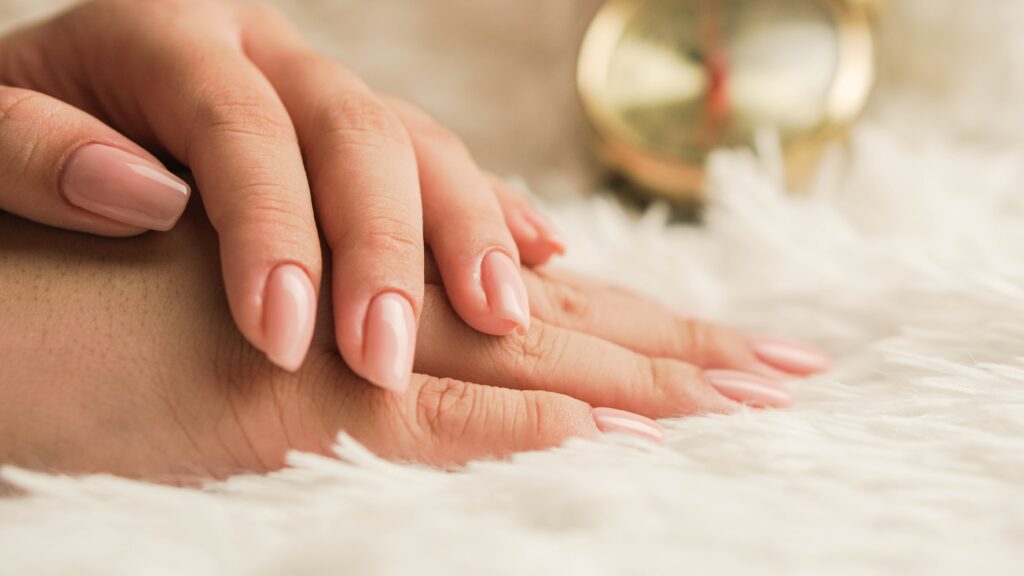
5. Treat Your Nails Like You Treat Your Hair
It’s the new golden rule. Hair and nails are both composed of keratin proteins, so it makes sense that they share many of the same rules for treatment, both hair and nails can become dehydrated and damaged from over-processing.
Frequent polish removal, gels, and acrylics do to nails what dyes, chemicals, and heat application do to hair. Just as hydration can help repair hair issues such as frizz and split ends, it can help improve dry and brittle nails.
There’s no nail care equivalent to second-day hair, but operating as though there are hard and fast rules for how to wash, care for, and use your nails can help keep them in the same good shape as your hair.
Just as you would condition your hair with a leave-in or rich conditioner, condition your cuticles as well to promote healthy, growing nails.
Conditioners that contain CF formulas are a good choice. They hydrate and nourish your nails and make them healthy and strong.
6. Watch The Weather
Winter can be a rough time for skin, hair, and nails alike. Not only can cool, dry weather cause nails to get extra brittle, but the extreme swings in temperature from going outdoors to indoors can cause additional damage.
The shift from a heated home or office to the chilly open air can cause nail cells to contract and expand repetitively, resulting in a weakening of the cells and leading to breakage. It’s good to always wear gloves in the winter and, you guessed it, moisturize, moisturize, moisturize to protect both the skin of your hands and your nails.
7. Look At Your Nail Tools And Products
Nail files: Instead of those old-as-time emery boards, that create microscopic tears in the nail that lead to splits and peeling, better opt for a glass or crystal nail file. Use a 100/180-fine grit nail file. Choose one that doesn’t hurt your nails with its rough texture and is finished in a manner that does the job well.
Nail polish remover: In the best-case scenario, you would avoid nail polish remover altogether. But since most of us aren’t going to entirely give up the joy of a nice manicure, it’s better to instead use non-acetone removers that contain hydrating oils and ingredients.
Nail brush: Instead of digging under your nails with tools such as a filer,use a gentle nail brush to clean out the dirt. Or, for a resourceful alternative, use an extra toothbrush you have lying around.
Nail growth products: So many of the so-called nail treatment or nail growth products on the market are, in reality, clear nail polishes with marketing additives that have no scientific validity. So choose your nail care products wisely.
8. Be Patient With Nail Growth
If you’re a chronic nail-biter, you know the victory of finally growing your nails out past your fingertips. Healthy habits plus patience pay off in nail care. But the primary focus should be on figuring out how to strengthen your nails, not on solving the puzzle of how to grow nails fast.
Stronger nails can lead to longer nails if you practice good nail care, but it all takes time. If you battle brittle nails and constant breakage, it’s smart to keep your nails clipped short until they regain strength; then they’ll have the foundation they need to grow
All problems start with germs and bacteria. You must make sure that there is no scope for them to breed. Clean your nails regularly, and make sure you dry them after washing.
This also prevents dirt and bacteria from accumulating under your nails. However, don’t overdo it; leaving your nails in water for an extended period of time can cause splits.
Pro tip: Take a toothbrush, apply some salt to it, and use it to scrub your nails and the skin around them gently.
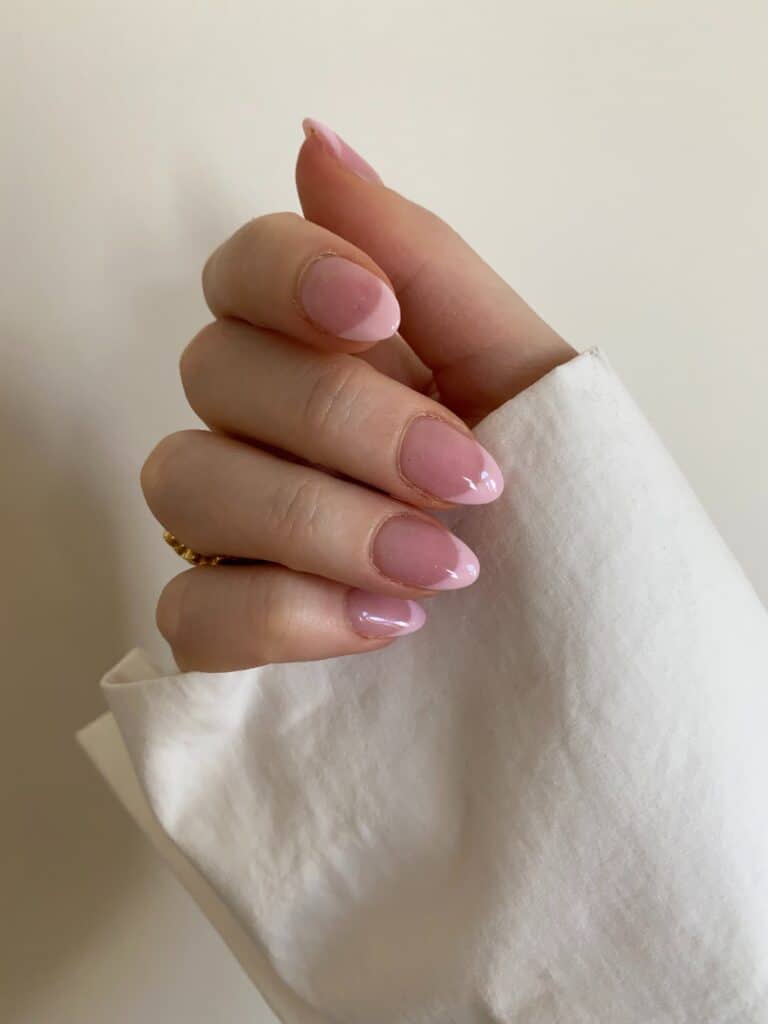
9. Stop Biting Your Nails
Biting your nails causes a lot of damage. In addition to making your nails look pathetic, the contact with your saliva makes them weak and brittle. It also harms your cuticles. Also, putting your fingers in your mouth transmits the dirt and germs from your fingers to your mouth.
To get rid of this habit, we advise you to apply nail paint that smells bad and puts you off to help you stop biting your nails.
10. Maintain Nail Hygiene
Clean your nails regularly and make sure all your nail tools are periodically washed and sanitized. Make sure that your nails don’t grow too long as that makes it easier for the dirt to accumulate below the nails.
Apply natural disinfectants on your nails like tea tree oil to keep the bacteria away and protect your nails from germs. You can also check out some professional tips by CDC on nail hygiene.
11. Wear Gloves For Protection
If you do your household chores yourself, then this is for you. A lot of your cleansing detergents contain chemicals that will cause harm to your nails when they come into contact with them.
A simple solution is to wear gloves to protect your nails. Make sure you wash your gloves thoroughly after use and hang them out in the sunlight to sanitize them.
When you need to wash dishes, it is best to protect your fingernails with gloves. You also need to ensure that the skin around the nails is clean and dirt-free.
12. Trim Your Nails Regularly
Similar to how trimming your hair regularly is good for its health, the same goes for your nails. Take a nail cutter and cut them neatly. Visit a nail salon if needed.
Take some time every few weeks to trim your nails and shape them in a manner you like. It is best if you trim your nails in a straight line and then either square them off or round them off at the tips.
Cut your nails evenly to avoid any ingrowth. Do not let your nails grow too much. Always keep them leveled and even for a neat look.
Growing nails too long makes them long and curved and causes issues like broken skin and ruptured cuticles. Best to cut them short and round them at the tips.
13. Apply A Base Coat For Protection
The base coat forms a protective layer on your skin and prevents your nails from getting discolored and stained.
It makes your manicure last longer and gives the polish a smoother application. So, the next time you decide to paint your nails, do not skip applying a base coat because it’s worth it.
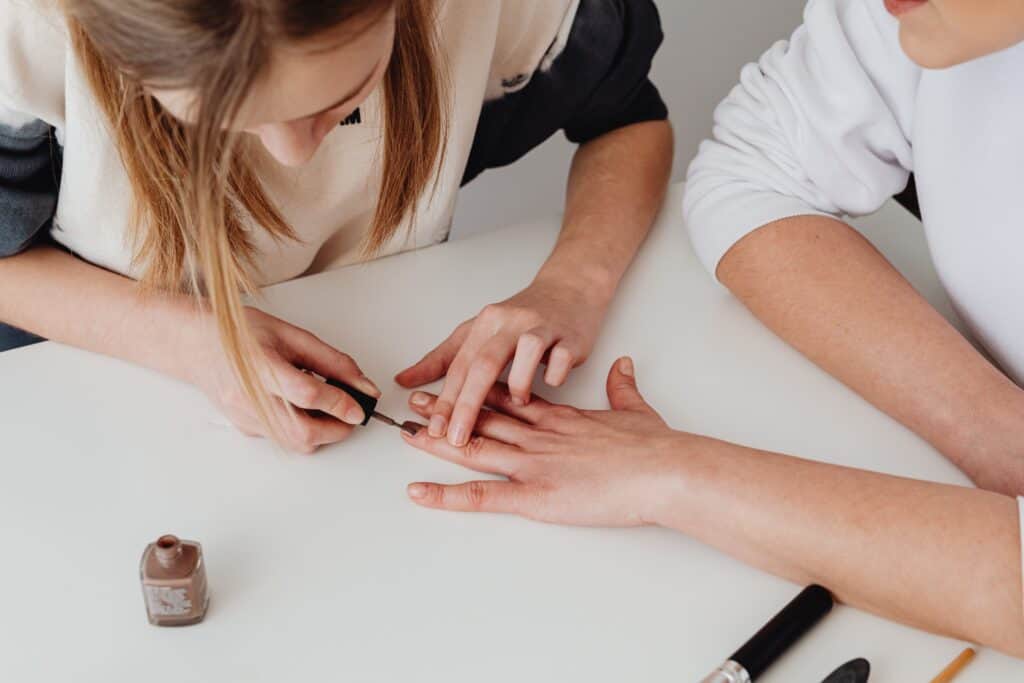
14. Top It Up With A Top Coat
A top coat gives your manicure a shiny, professional finish and helps your nail color last longer, preventing the polish from chipping off easily. You can choose from a range of top coats depending on the look you are going for – if you want a matte finish, choose a matte top coat.
A good nail trick is to apply a top coat to your nails every few days to help your manicure stay on longer.
15. Never Scrape Off Your Nail Polish
Scraping off your nail polish is the worst thing you can do to them. It makes your nail surface rough and patchy. It also strips away the top layer of your nails.
Also, to prevent the polish from chipping off on its own, you must apply the nail paint in two rounds of thin coats instead of dousing it in one thick layer of color.
Avoid scraping and peeling your nails. Instead, use an acetone-free nail polish remover.
16. Avoid Using Gel And Acrylics
Gels and acrylics are no doubt super pretty, but they sadly cause immense damage to the nails. Avoid them entirely if possible.
The acrylic powder contains a lot of chemicals that are able to penetrate the bloodstream through the delicate nail bed. The UV lamps used in gel manicures also cause harm to the skin around your nails and hands.
A smarter alternative for this would be to choose press-on ones if you are hellbent on this particular nail look, as they are less harmful and easier to apply.
17. File Your Nails In One Direction
File slowly and gently, and in one direction. Otherwise, the nails get weak and break prematurely.
Filing in the same direction also helps you achieve a smooth tip and makes it easier for you to shape the tip in the manner you want. Filing them in an aggressive manner promotes splitting and can damage your nails.
Begin by filing from one corner to the center of the nail, and then from the opposite corner to the center or vice versa. This process helps you achieve a smooth finish and doesn’t harm your nail edges.
18. Stop Water-Based Manicures
Avoid water-based manicures because the nail polish tends to chip away faster. Your nail bed absorbs water and expands when dipped in water and goes back to its original shape after being taken out of the water.
This is also why soaking nails before a manicure is a bad practice. Not only does this make your nails more vulnerable to infection, but it also doesn’t allow nail polish to adhere as well or last as long.
Applying nail polish when the nail bed is expanded is not good because once it shrinks, the nail paint cracks, leading to chipping.
Instead, go for an oil-based manicure, where you cleanse your nail and nail beds with an oil-based formula.
19. Choose A Safe Nail Polish
When selecting a nail polish, you must exercise extreme caution. It’s very important to choose ‘3 Free’ polish. This means it does not contain “the toxic trio”—dibutyl phthalate (DBP), toluene, and formaldehyde.
Studies have shown these three nail polish ingredients to be Endocrine Disrupting Chemicals (EDCs). This makes them incredibly harmful to human health.
To keep your nails protected from daily hazards use a non-toxic nail hardener that is formulated without the toxic trio.
Also, eating with hands that have paint on your nails is not a good idea, as bits of the nail paint can chip and fall into the food, which will eventually go inside your body and cause harm. Instead, choose natural and chemical-free nail paints that are eco-friendly.
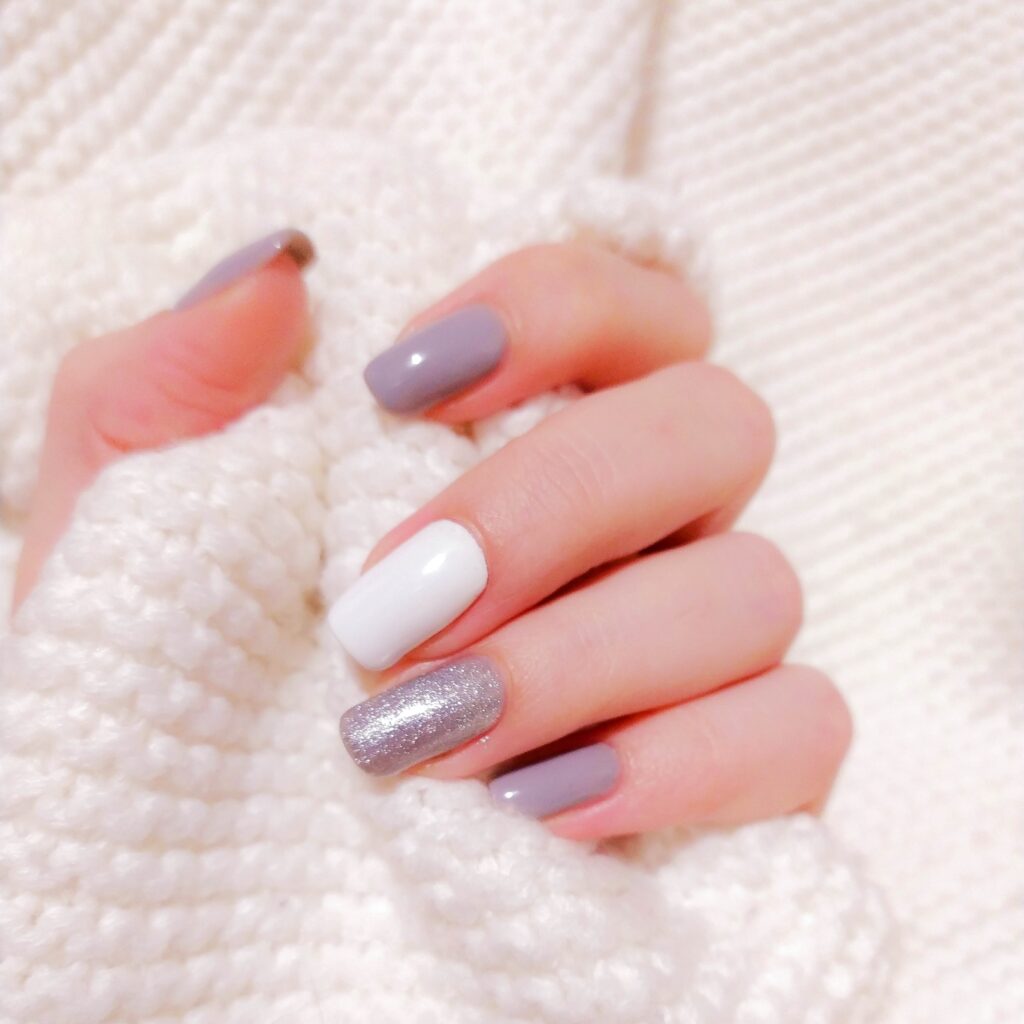
20. Make Your Manicure Last Longer
In order for your manicure to last, you need to follow a series of steps. Start by removing all nail polish, applying a cuticle softener, and soaking your hands in warm water for 5 minutes. Then, gently push back your cuticles with a cuticle pusher tool. Buff and file your nails. Apply a base coat, followed by two layers of nail paint and a top coat. Let them air dry.
You need to reapply the top coat once every few days to make sure the paint does not dry and chip off. In case that happens, file off the chipped nail and seal it again with a top coat. You can even add a thin layer of white coat (go the French manicure way) to fix your chipped nail.
21. Choose A Good Nail Paint Remover
Choose acetone-free nail polish removers, as these will be less harsh for your nails and skin. Acetone is harsh on your nails and skin and very damaging. It dries out your nails and makes them prone to breakage. Pick removers from good and sustainable brands.
22. Clean Extra Polish Off Cuticles
You are bound to have some color on your cuticles while painting your nails. Clean it up with a nail polish remover for a neater manicure. Take an earbud, dip it in nail polish remover, and gently wipe off the paint from the cuticles.
23. Look At Your Diet
Eating healthy fixes everything. Nail problems are a result of a lousy diet, and issues like brittle nails result from calcium deficiency. You need to have adequate amounts of it in your food.
Also add vitamin E, protein, iron, vitamin D, zinc, and magnesium to your diet in the form of nuts, beetroot, soy, beans, lentils, whole grains, greens, etc. for healthier and stronger nails.
Final Words
You should take care of your nails the same way you care for your skin or hair. Even if you receive professional manicures and pedicures, make sure you take the time to care for and protect your nails. Maintaining healthy nails can be easier if you use the appropriate approach.
These healthy nail care tips can help you get there faster – just make sure you stick to them. Remember that simple lifestyle changes rather than expensive nail equipment are the greatest way to achieve stronger, healthier nails.
FAQs On Nail Care Tips
1. How often should I care for my nails?
Make it a daily habit. Do the basics – cleanse, moisturize, and trim them regularly.
2. How do harden nails naturally?
Here are some pro tips:
– Minimize exposure to water.
– Moisturize regularly
– Pay attention to your diet.
– Stay hydrated.
– Be careful about the products you use.
– Avoid using gel or acrylic nails
3. Why do my nails peel at the tips?
Usually, this happens due to damage to the nail, if you use them as tools or constantly have them in water, this can dry the nails. Picking off nail varnish or extensions will also damage the layers of the nail.
4. How can I stop my nails from breaking all the time?
Look after them! Keep them short whilst you improve the condition with cuticle oil and a treatment base coat or have regular gel polish applied to strengthen them.
You May Like:
